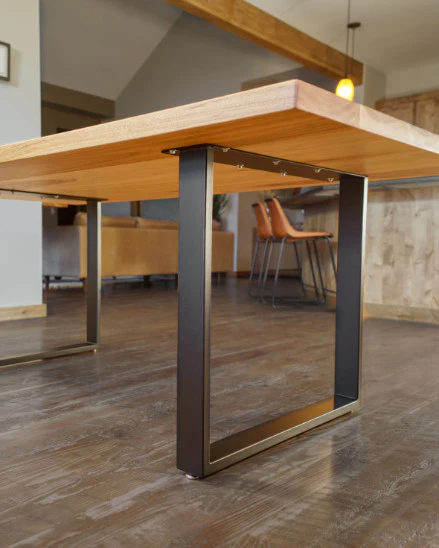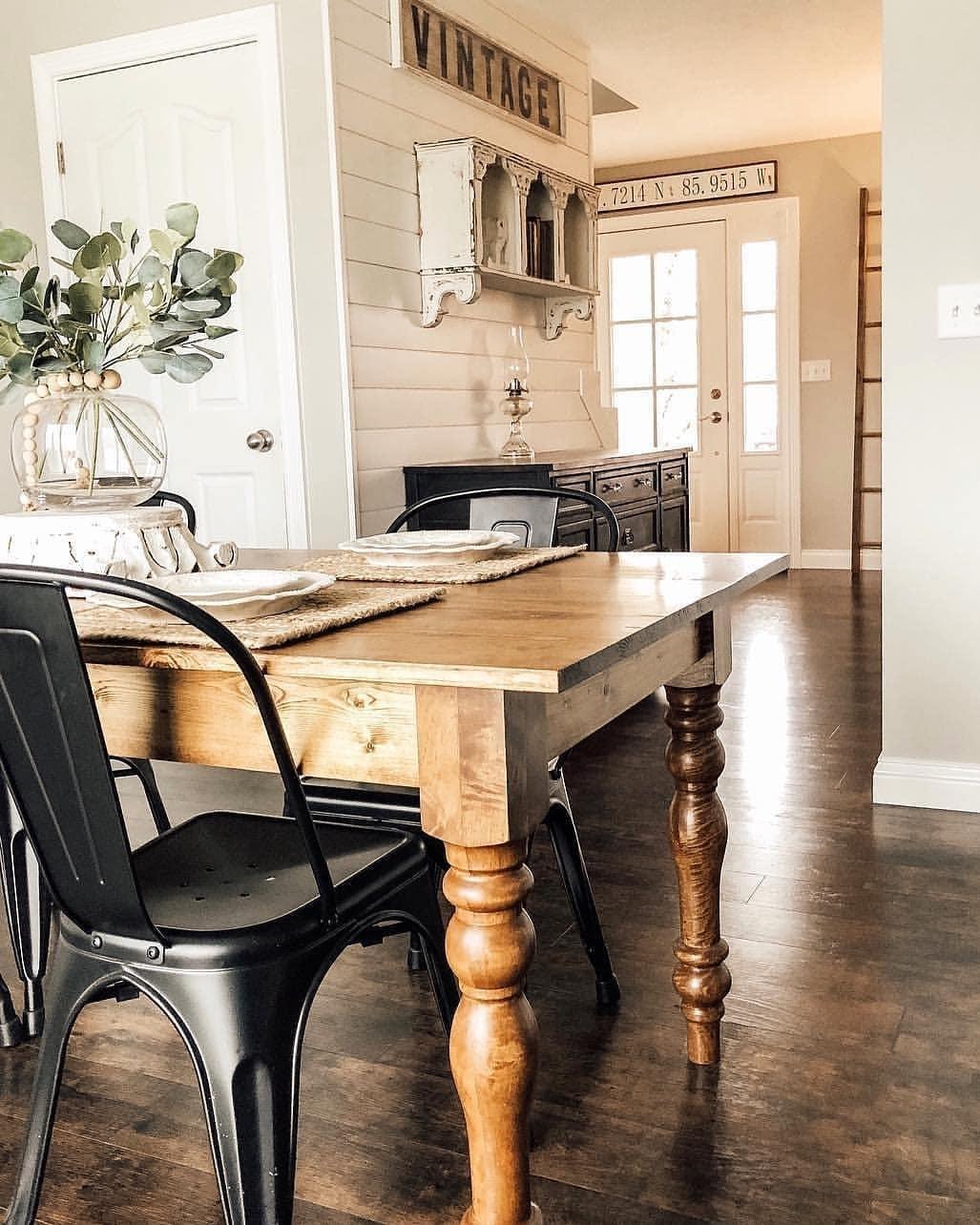Selecting the Perfect Table: What Styles Job Best for Your Home?
Selecting the optimal dining table for your home can be a nuanced process that stabilizes appearances and capability. Whether your space leans towards standard beauty, contemporary minimalism, rustic appeal, or commercial stylish, the selection of designs readily available can satisfy varied tastes. Each style provides special advantages and difficulties that can either boost or interrupt your eating area's consistency. Understanding how different products, forms, and dimensions interact with your existing style is vital. To browse these choices successfully and find a table that truly enhances your home, take into consideration the adhering to facets thoroughly.
Analyzing Your Room
Assessing the measurements and layout of your dining area is an essential first step in selecting the best table. Begin by determining the size and size of the room, representing doorways, windows, and other building functions that could influence table placement. This guarantees that your table not only fits but also permits for comfortable activity around it.
Consider the number of people you usually entertain. A table ought to fit your family's daily needs while offering adequate versatility for occasional guests. As a policy of thumb, allot at the very least 24 inches of table width each to ensure a comfortable dining experience.
It's also important to keep proper clearance around the table. Ideally, there should be at least 36 inches in between the table edge and wall surfaces or other furnishings, enabling simple access and movement. For areas where chairs with arms or extra storage space devices like buffets are involved, boosting this clearance to 48 inches is recommended.
Lighting and ambience play considerable functions as well. Guarantee that your table aligns with existing lights components or strategy for ample lights options. This comprehensive spatial assessment warranties that your eating table not just fits physically however likewise integrates with your room's total capability and visual.
Popular Table Styles

Conventional table usually include ornate information, bent legs, and abundant wood coatings, evoking a feeling of classic sophistication. They are excellent for homes with classic design or those looking to add a touch of elegance to their eating area.
Modern eating tables prioritize simpleness and tidy lines, usually incorporating materials like glass and steel. These tables are excellent for contemporary rooms, giving a smooth and uncluttered appearance that matches minimalist layout philosophies.
Rustic dining tables, on the various other hand, highlight natural materials and a handmade look - dining room table legs. They commonly include recovered wood and a distressed surface, producing a cozy and welcoming environment. These tables work well in farmhouse-style homes or those looking for a relaxing, organic feeling
Industrial dining tables integrate basic materials such as metal and wood, frequently showcasing an utilitarian visual. This style is well-suited for loft spaces or metropolitan areas, including a touch of sturdy charm and hop over to here resilience to the eating experience.
Each style supplies distinct advantages, making it vital to select one that aligns with your home's general design and your personal preferences.
Material Options
When choosing a dining table, the option of material plays a critical function in establishing both the table's looks and functionality. Wood, steel, glass, and composite products each offer one-of-a-kind advantages and obstacles, making it imperative to align the product with your home's decor and lifestyle demands.
Timber is an ageless and functional choice, readily available in selections such as oak, walnut, and mahogany. Recognized for its longevity and warmth, wood enhances both conventional and contemporary interiors. Nevertheless, it calls for normal upkeep to stop scratches and bending.
Metal tables, often crafted from stainless-steel, light weight aluminum, or functioned iron, are praised for their modern-day charm and toughness. They are especially suited for industrial or minimalist settings however can be vulnerable to damages and may really feel cold to the touch.
Glass table bring an air of elegance and openness, ideal for smaller sized spaces as they produce an illusion of more area. While easy to clean, glass can be susceptible to smudges and needs cautious taking care of to avoid chips and splits.
Composite products, such as MDF and plywood, deal affordable and customizable remedies, though they visit this page might do not have the durability of natural materials. Choosing the appropriate product ensures your table is both a useful possession and an aesthetic joy.
Shape and Size Considerations
After figuring out the ideal product for your eating table, the following consideration is picking the right shape and size to match your room. The shape of the table significantly affects the room's aesthetic and functionality. Rectangular tables, one of the most usual form, are perfect for bigger rooms and can accommodate a higher variety of visitors. They also enable an extra official eating experience. On the other hand, rounded tables cultivate a sense of intimacy and are exceptional for smaller dining locations, urging discussion by getting rid of corners and making every person feel equally included.
As a regulation of thumb, allot at the very least 24 inches of table size per individual to make certain comfy eating. Furthermore, think about the table's clearance area: there must be at least 36 inches between the table edge and the walls or various other furnishings. Expanding tables supply adaptability if you often hold larger gatherings, providing added seats when required without occupying extra space daily.
Matching Your Style
Picking a table that harmonizes with your existing style is essential in creating a natural and inviting space. Begin by examining your present indoor layout style, whether it be contemporary, standard, rustic, or eclectic. The eating table ought to complement the general aesthetic, not complete with it. A sleek, minimal table with clean lines is suitable for a modern home, while a vintage, elaborate table suits a much more typical setting.
Shade and product are equally considerable. If your style features warm tones and natural products, take into consideration a wooden table to improve the natural feeling. Conversely, a glass or steel table might be much more proper in a room dominated by awesome shades and commercial components. Pay attention to the finish, as it must mirror various other furnishings and components pop over to these guys to maintain harmony.
A rough-hewn, redeemed timber table can include character to a rustic room, while a sleek marble surface area can raise a glamorous dining location. A well-matched eating table not only boosts aesthetic charm but additionally enhances the overall eating experience.

Conclusion
Choosing the excellent eating table necessitates cautious factor to consider of room, design, materials, shape, and size (dining room table legs). Conventional tables enhance timeless insides with abundant wood finishes, while modern tables fit contemporary setups with glass and steel. Rustic layouts present heat using natural materials, and industrial styles enhance urban environments with raw aspects. Balancing the table with existing design makes sure both capability and aesthetic charm, contributing to a cohesive and aesthetically pleasing dining location.